
Top 10 for 2Gen: Policy Ideas and Principles to Advance Two-Generation Efforts
Six principles and ten specific policies policymakers can use now to guide the design and use of two-generation approaches. October 2014.
View / DownloadPolicy change offers the opportunity to improve outcomes at scale, and as a result, many foundations are shifting investments toward advocacy and policy work.
Local, state, and federal agencies and those advocating for whole family policy strategies have won significant changes in policy to support comprehensive approaches. These improvements are occurring through legislative, administrative, and regulatory mechanisms. Foundations will first want to familiarize themselves with the guidelines for foundations and tax classifications, which can be found here.

Six principles and ten specific policies policymakers can use now to guide the design and use of two-generation approaches. October 2014.
View / Download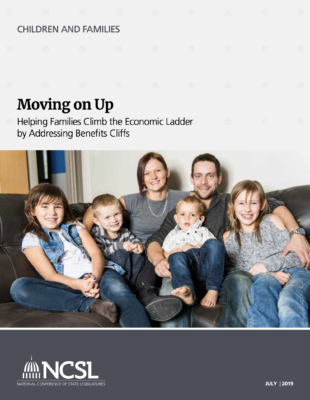
This report discusses benefits cliffs, which are abrupt changes in public benefits, such as TANF, SNAP, child care, and health care, that occur when earnings increase and eligibility changes, almost always offsetting the benefit of employment or advancement and in some cases creating a “cliff” and loss of total resources available to a family.
View / Download
This report offers lessons from a six-state policy initiative in New England, A Whole Family Approach to Jobs, on effective strategies for changing policy over a two-year period and the results.
View / Download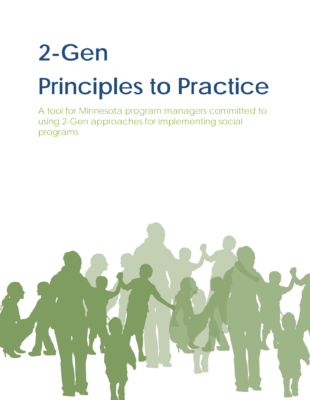
This tool is intended to help government agencies identify administrative policy changes and practices that support two-generation programming in public agencies.
View / Download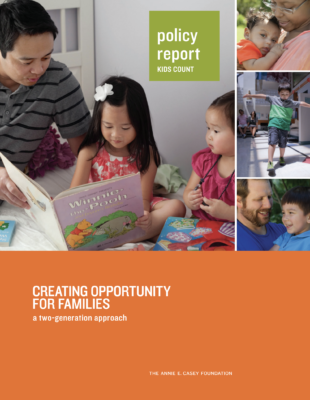
An early report on two-generation policy options to support families.
View / Download
A review of possible two-generation policies at the state and local level.
View / Download
A series of research and policy reports from 2015-2018 from the Urban Institute
View / Download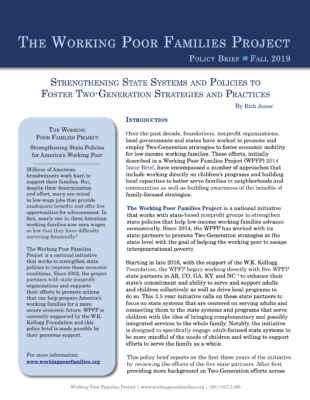
A review by the Working Poor Families Project of policy changes in five states — Arkansas, Colorado, Georgia, Kentucky, and North Carolina — related to two-generation state systems change.
View / Download
This report offers lessons from a two-generation state initiative, Parents and Children Thriving Together, co-led by the National Governors Association and the Center for Law and Social Policy.
View / Download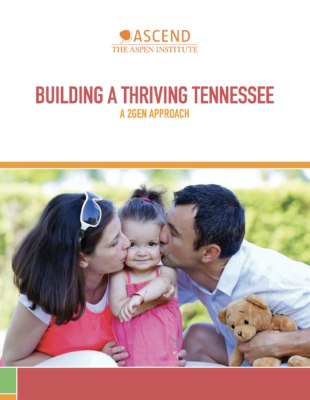
Tennessee has been a leader in systems change to support families. This case study offers strategies and lessons in moving policy forward.
View / Download
This case study details Colorado’s approach to two-generation policy change at a systems level.
View / Download
WFCO supported 18 bills in 2019, 16 of which passed. As a whole, the new laws propel women toward ecnomic security by making pay more equitable, high-quality child care and college more affordable and accessible, and full-day kindergarten free throughout the state. They prepare Colorado for paid family and medical leave, retirement savings systems, and a full and fair 2020 census; give Coloradans the opportunity to vote to improve our tax policies; and extend greater protections for student loan borrowers (two-thirds of the country’s $1.46 trillion student debt belongs to women).
View / Download
It is not enough for us to invest solely in programmatic solutions to accelerate economic opportunity for women. Without meaningful change in systems, women and their families will never have a complete pathway to success. This is why we advocate for nonpartisan policies that break down barriers.
View / Download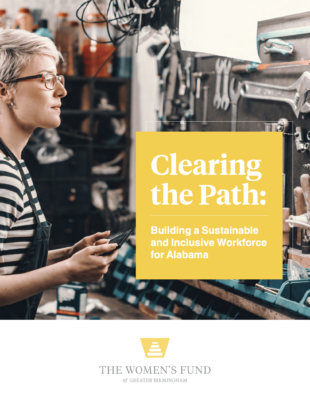
A report by The Women’s Fund of Greater Birmingham and based on research by the Public Affairs Research Council of Alabama (PARCA) examines the question of how the state’s workforce development system serves women and their families and provides recommendations for building a workforce development system that truly works for women.
View / Download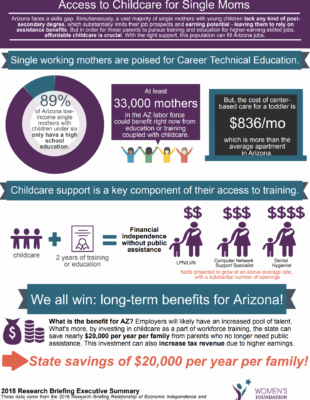
Arizona faces a skills gap. Simultaneously, a vast majority of single mothers with young children lack any kind of postsecondary degree, which substantially limits their job prospects and earning potential – leaving them to rely on assistance benefits. But in order for these parents to pursue training and education for higher-earning skilled jobs, affordable childcare is crucial. With the right support, this population can fill Arizona jobs.
View / Download
Many Arizona families, particularly single mothers with young children, face substantial challenges in meeting their economic needs. Almost one in three (29%) children under age six in the state lives in poverty, putting them at risk for a host of future economic, health, and social concerns. Currently, the vast majority of Arizona low-income single mothers do not have any kind of post-secondary degree, which substantially limits their job prospects and earning potential. In order for these parents to pursue training and education for higher-earning jobs, affordable childcare is crucial. However, childcare issues in Arizona are particularly pronounced. These factors, taken together, highlight an opportunity for two-generation programs to transform the fate of many Arizona families. Short-term investment in targeted training programs coupled with childcare support for those engaged in these workforce development activities (known as a two-generation approach) could lead to longterm savings for the state and benefit for both mothers and their children.
View / Download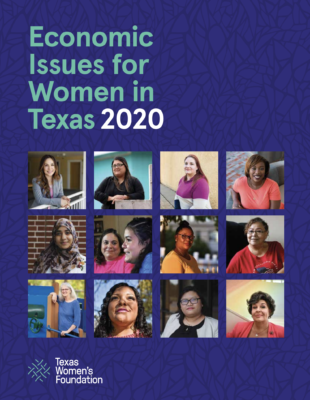
This 2020 study, based on research conducted by Every Texan (formerly the Center for Public Policy Priorities), again takes a comprehensive look at the four building blocks that are fundamental to the financial security of a woman and her family: child care, housing, education and health care. This study also reveals dramatic changes in our state’s demographics, and the challenges and opportunities we face in creating a more equitable society.
View / DownloadWhole family, multi-generational approaches meet the needs of and provide opportunities for children and the adults in their lives together. These approaches are highly contextual, and may be called “whole family,” “two-generation or two-gen,” and “multi-generational” approaches in some organizations, communities, and contexts. Particularly for Indigenous communities, an approach that supports multiple generations within a home or family is important. The goal of a whole family, multigenerational approach is to ensure economic, educational, and health stability and mobility for the whole family, using mechanisms and strategies that give both generations in the family a balloon, and not one a dead weight.
This guide uses “whole family” for consistency and ease of reading; and encompasses the meanings of these other terms.
This guide also uses “parents,” which includes caregivers, mothers, fathers, grandparents, and others who are in the lives of children. Families are defined by the families themselves in our view, rather than by an outside agency, and the guide reflects this as well.